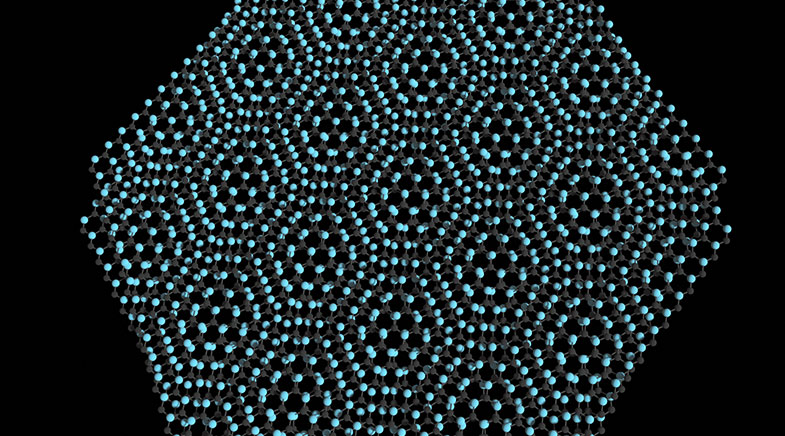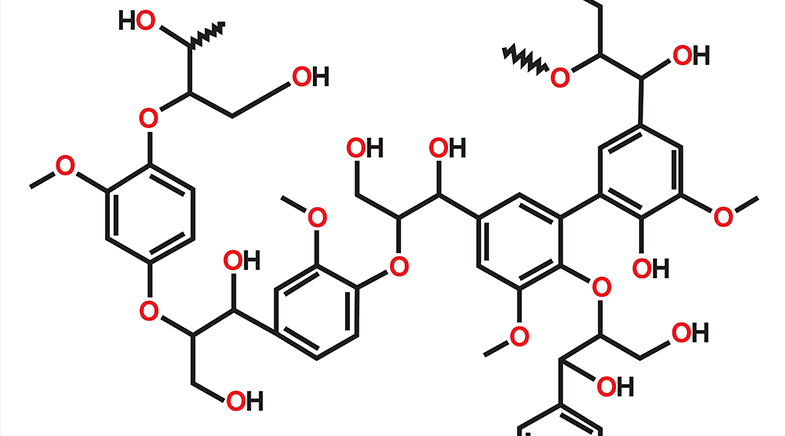A 'magic angle' for heat management
-
- from Shaastra :: vol 01 issue 03 :: May - Jun 2022

Researchers have caught a glimpse of the inner world of an exciting material called the Magic-Angle Twisted Bilayer Graphene (MATBG).
Led by physicist Anindya Das, a team from the Indian Institute of Science (IISc), Bengaluru, has recorded an unusually large thermopower signal or heat transmission at an ultra-low temperature using MATBG. It recently reported its findings in Nature Physics.
MATBG has evoked considerable interest ever since researchers in the U.S. sandwiched two graphene layers by twisting them at an angle of 1.1˚ in 2018. The experiment led to physical phenomena such as superconductivity, ferromagnetism and other quantum effects.
"In MATBG, the electronic bands are flat, with the velocity of electrons approaching zero. Thus, electronic interactions dominate and give rise to exciting phases," Das says.
The twisted graphene bilayer, however, is still a mystery. An accurate picture of its electronic structure is expected to answer questions about superconductivity, correlated insulators, topological phases and magnetic orders.
The conventional approach to understanding the structure would be with scanning tunnelling microscopy. But the IISc team used a new method called 'Thermal transport'. It created a temperature difference at the two opposite junctions of the material that generates an electrical signal along with the thermal heat flow from a higher temperature to the lower temperature zone, known as heat current.
Measuring heat transmission in two-dimensional materials is rare. "Our group is the second group globally and a pioneer to measure the heat current in two-dimensional or mesoscopic materials," Das says.
A thermal current is extremely sensitive to electron-holes asymmetry within a material. When charge carrier electrons rush from the hot to the cooler ends, the vacant places left are called holes. The more the electron-hole concentration at the two opposite ends of the material, the more the current.
The IISc quantum transmission group's work highlights the ability of thermopower to provide unique insights into novel quantum phenomena observed in MATBG.
A significant value of voltage 100 μV per Kelvin — a micro volt is one millionth of a volt — at 1K was observed in MATBG, 100-1,000 times more than that produced in usual graphene at such low temperatures. The thermal current response in MATBG also points to superconductivity at an ultra-low temperature.
The IISc quantum transmission group's work highlights the ability of thermopower to provide unique insights into novel quantum phenomena observed in MATBG and phase transition due to the addition of electrons in the materials.
In application, the large thermopower could be utilised in the cooling system at cryogenic temperatures. Any quantum computer system experiences a loss of power generation at a shallow temperature. MATBG could be used in quantum technologies for better thermal management so that waste heat can be recycled to generate electrical signals.
"It could be an accidental discovery but twisting the bilayer graphene at an angle of 1.1˚ was a dramatic move in condensed-matter physics. Still, a lot of excitement is awaited," Das says.
The team will now explore the material's thermopower at room temperature. The IISc group is optimistic as the MATBG is like a just-discovered treasure chest: nobody yet knows what surprises it contains.
Have a
story idea?
Tell us.
Do you have a recent research paper or an idea for a science/technology-themed article that you'd like to tell us about?
GET IN TOUCH














